Interior of the Joint European Torus (JET) tokamak,
the largest magnetic confinement fusion device in the world.
Click on image for full size
Image courtesy of JET
Fusion Experiments
There are several experiments worldwide where the conditions for nuclear fusion reactions have been achieved in a controlled manner. The two main approaches that are being explored are magnetic confinement fusion and inertial confinement fusion.
In the former case, a (Deuterium-Tritium) plasma is kept confined
(typically within a doughnut shaped container) by a strong magnetic field and heated up to temperatures where the fusion reactions start to occur at a significant rate. In the latter, high-energy lasers impact and compress a solid
(frozen) Deuterium-Tritium pellet producing an implosion that eventually raises the temperature of the pellet (that has become plasma) enough to trigger nuclear fusion reactions.
Presently the (controlled) fusion devices have not achieved the condition in which they can actually produce more energy than the energy they consume, however tremendous progress has been made since the first experiments in the early 1960's. Despite the high research and development costs, and the technical uncertainties still present, nuclear fusion appears a viable and environmentally sound alternate energy source for the 21st century.
You might also be interested in:
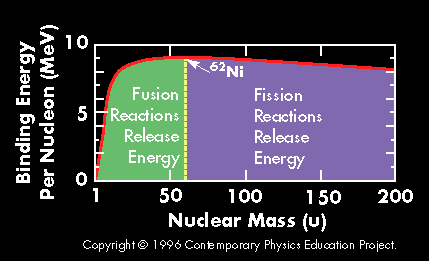
A plot of the binding energy per nucleon vs. atomic mass shows a peak atomic number 56 (Iron). Elements with atomic mass less then 56 release energy if formed as a result of a fusion reaction. Above this
...more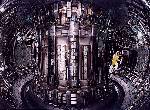
There are several experiments worldwide where the conditions for nuclear fusion reactions have been achieved in a controlled manner. The two main approaches that are being explored are magnetic confinement
...more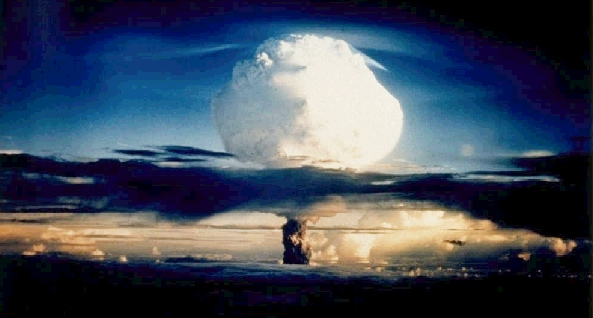
In the Hydrogen bomb the explosion of a nuclear fission charge (atomic bomb) produces the temperature and density necessary for the fusion of Deuterium and Tritium (isotopes of Hydrogen), resulting in
...more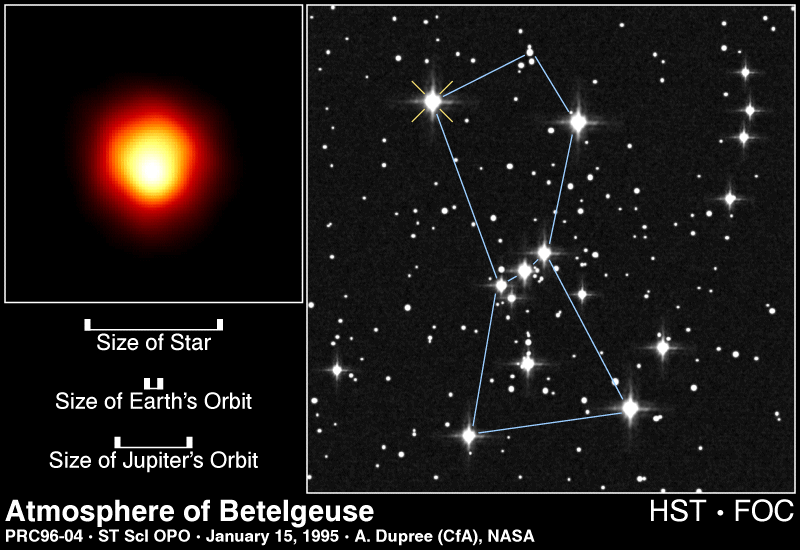
When the temperature in the core of a star reaches 100 million degrees Kelvin fusion of Helium into Carbon occurs (three Helium nuclei combine to form a nucleus of Carbon). In the same range of temperature
...more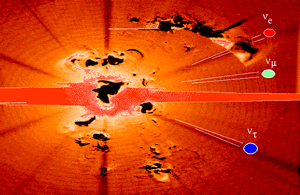
All of the matter and energy in the Universe was initially confined in a very small region until an enormous explosion occurred, causing the Universe to expand. This expansion continues today.
...more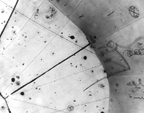
The neutrino is an extremely light (and possibly massless) neutral particle. The neutrino belongs to the family of leptons, the particles that interact through the so-called weak force. For this reason
...more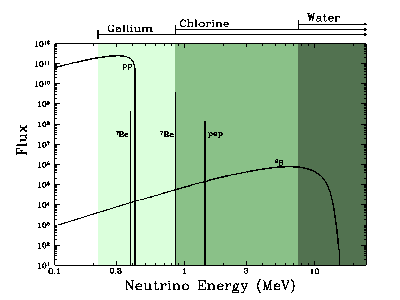
Theories about fusion inside the solar core predict the number of neutrinos that should reach Earth. Experiments on Earth have been set up to detect solar neutrinos in order to test the validity of these
...more














